Succulents and their Adaptations
Succulents are a large, widespread family of plants comprising a variety of different species. Their extraordinary adaptations to arid, extreme conditions are worth a closer look.
Habitat
Succulents are mostly found in the harsh desert climates of South Africa, South America and southern North America. Therefore, they need to cope with the following:
- Limited water supply - in some regions less than 30mm of rainfall annually
- High exposure to sun
- Herbivores - especially since the habitat is characterized by food scarcity
The extreme conditions of the niche have led to extreme evolutionary pressure, which, in turn, led to enormous phenotypic adaptations.
Preserving water - Stem succulents
Since the water supply is limited, succulents evolved their namesake - succulency (Greek: sucus - juice, ulentus - abundance). It is the ability to store large amounts of water inside the plant. Starting from a regular tree form, the succulents have adapted to store water in different ways.
Stem succulents preserve water in their stems and branches. How is this possible? One solution is to increase the thickness of the stem and branches. It leads to the plant looking like a misshapen tree - as in the case of a baobab (a.k.a monkey bread tree).

Baobab trees (Adansonia digitata) in Madagascar - stem succulents. In the foreground, a wagon pulled by two specimens of zebu - cattle with the characteristic fat hump on their backs. For whatever reason, Google Maps includes official Street View coverage captured from a similar cattle-drawn cart in Madagascar.
Incidentally, even the mighty baobab trees with their succulency can’t protect themselves from global warming. Since the beginning of the 21st century we are witnessing an unprecedented baobab die-off in South Africa. The trees are collapsing, completely dried out inside. One of the species, Adansonia perrieri, is listed as “critically endangered”, with fewer than 200 mature trees remaining. Sadly, it is expected to become extinct in the wild soon.
As an aside, scientists are collecting the baobab’s DNA in search of traits, such as drought tolerance, that could be bred into future trees[1].
Other examples of stem succulents include the pachypus plants (Greek: pachys - thick, pous - feet). Some of these look like trees with thick branches, while others form a more extreme rock-like trunk with liana-like branches. The latter are also known as caudex plants. It’s also worth noting that the word pachy is often found in the taxonomy of the succulents due to their appearance.
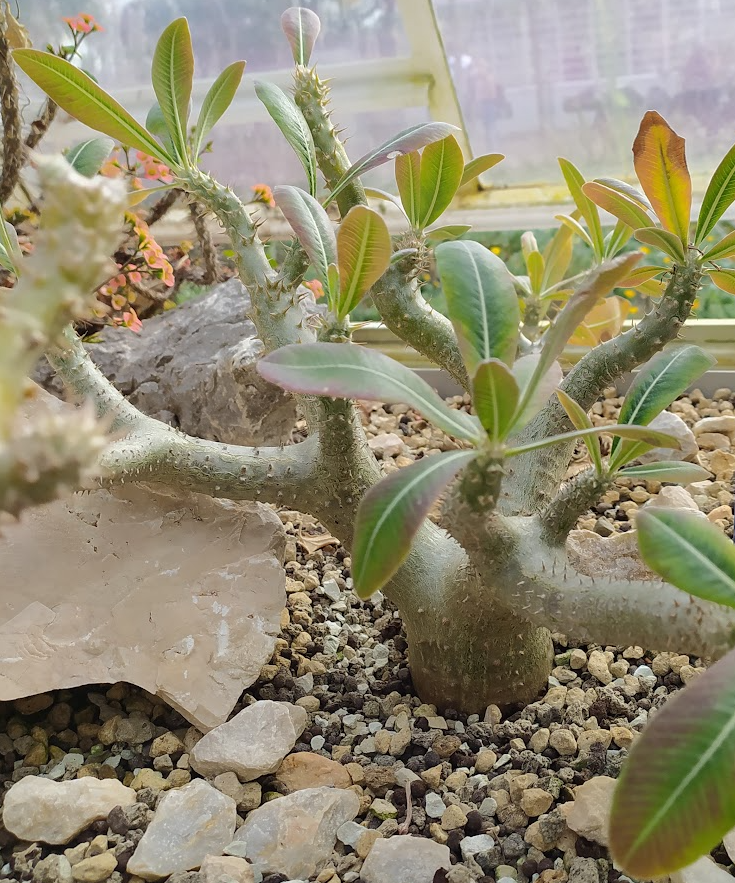
Pachypodium horombens plant - endemic to Madagascar.

Cyphostemma pachypus plant. The stem is rock-solid (I checked).
In the examples above, non-succulent leaves are grown to photosynthesize. The benefit of this solution is the separation of concerns. Since the mass and energy transfer is carried out by the leaves, the stem and branches can become highly specialize for impermeability. This leads to another adaptation: a dense, wax coat on the surface of the bark.
This adaptation is particularly evident in the plants inhabiting the driest regions. Such as the genus Monsonia, a shrub found in the arid region of Lüderitz, Namibia. The plant was thoroughly described by Kurt Dinter, a German scientist, who worked in that area at the turn of 20th century. He claimed, that the shrubs were able to grow on an exposed bedrock, surrounded by dunes and their waxy bark was used as tinder or even as an ingredient in candles.
Cacti
Another solution is to carry out photosynthesis in the stem and branches. In this case, the stem has to be permeable, which reduces its water retention capabilities. The advantage is, the plant needs no leaves. This solution was evolved by the cactus (Cactaceae) family.
Cacti are native to the Americas and are found on both continents. This information immediately tells us, that their adaptations evolved after the separation of the Americas and Eurasia. The only member of the cactus family in the Old World is an epiphytic species Rhipsalis baccifera. It is believed to have been introduced by migratory birds.
Back to the photosynthesis. Cacti need to inhale CO2 via their stems. They do this through tiny openings called stomata. When the stomata are open, they release water vapour from the plant. To minimize the losses, cacti leverage the day-night cycle and only open the stomata after sunset. The stomata are also typically slightly sunken into the surface. This provides protection from the wind and provides shade.
Photosynthesis requires sunlight, so cacti need to store the CO2, which is collected at night, until daylight. They store it in the form of a malic acid. Keep in mind that storage and conversion require energy. That’s why “Normal” plants simply collect CO2 during the day and perform photosynthesis on the spot.
To further protect the succulent part of the stem from sunlight and water loss, cacti often take on the shape with a star-like cross-section (see below). This way, the less vital parts protect the stem’s core from heating up. Below is a cross-section of a cactus stem. Throughout the year, cacti get thicker and thinner, depending on their water content.
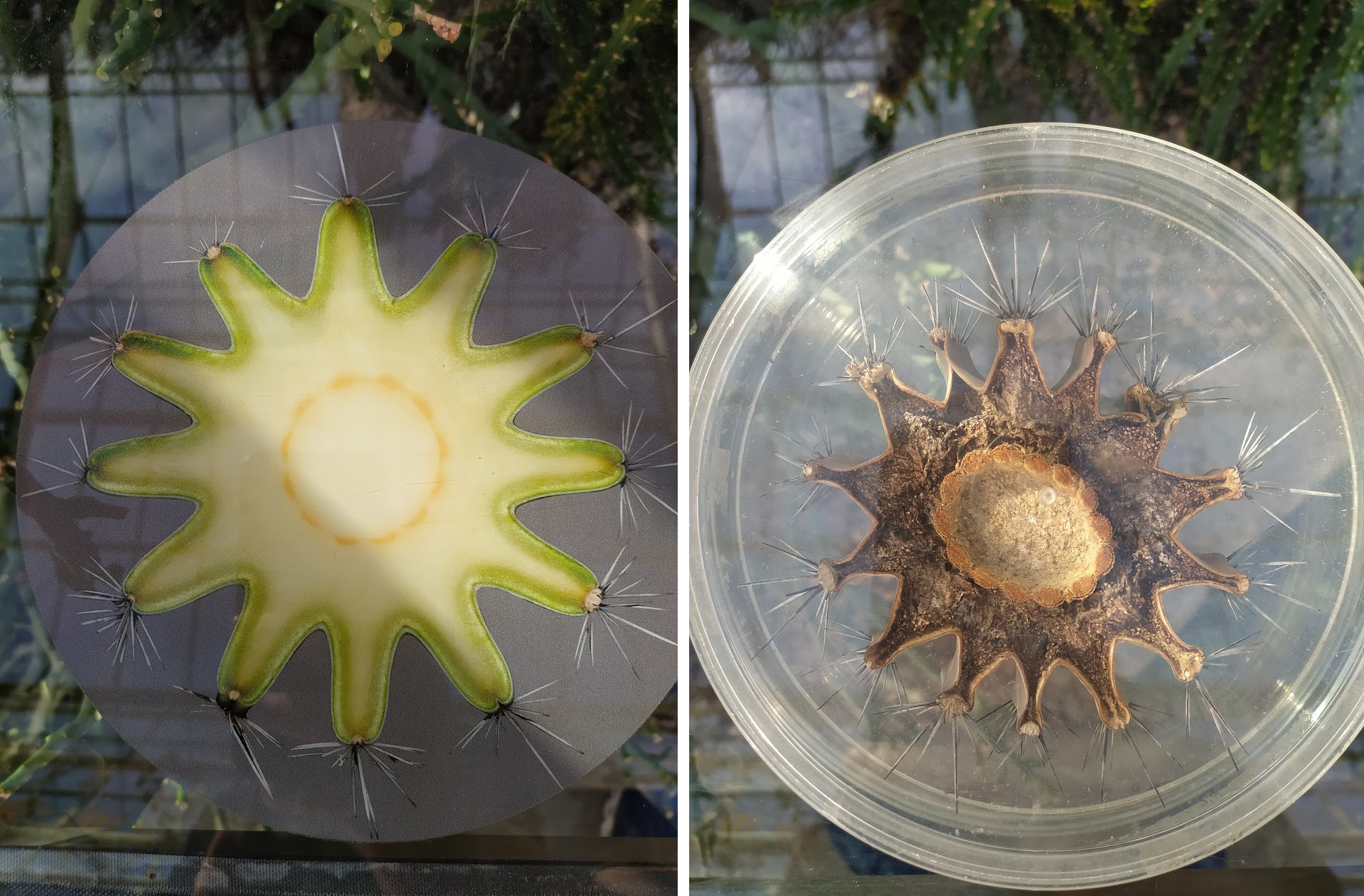
A cross-section of a cactus. Left - freshly cut, full of water. Right - dried out.
Leaf succulents
The aforementioned Kurt Dinter also describes Augea capensis - a so-called leaf succulent. This type of succulents evolved succulence in their leaves. Common leaf succulents are Aloes and Agaves.
A small Augea shrub can weigh 4 kilograms and a person is able to squeeze 2 liters of water out of it with bare hands. The water will however not help surviving on the South African desert due to its salt contents.The reason why the water contains so much salt is that the plants developed a phenomenal way of storing the water. They use hygroscopic properties of the salt to bind water inside the leaf and minimize the losses caused by evaporation.

Augea capensis - A leaf succulent. As shown in the picture, it grows in the harshest of climates.
Spines and thorns
To deter the herbivores, succulents developed several techniques. One of them is spines - the hallmark of the cacti family. Spines are a good example of convergent evolution since they evolved from different parts of plants for different, isolated, plant groups.
I mentioned that cacti do not need leaves, because their stem and branches are responsible for photosynthesis. This allowed them to repurpose the leaves. What they grow instead are spines, which are highly altered vestigial leaves. The spines are growing on so-called areoles - points on the surface of the branches, which evolved from branch buds. Some cacti grow glochids - hair-like, small spines. While not as strong as spines, they are extremely irritating and difficult to get rid of once caught.
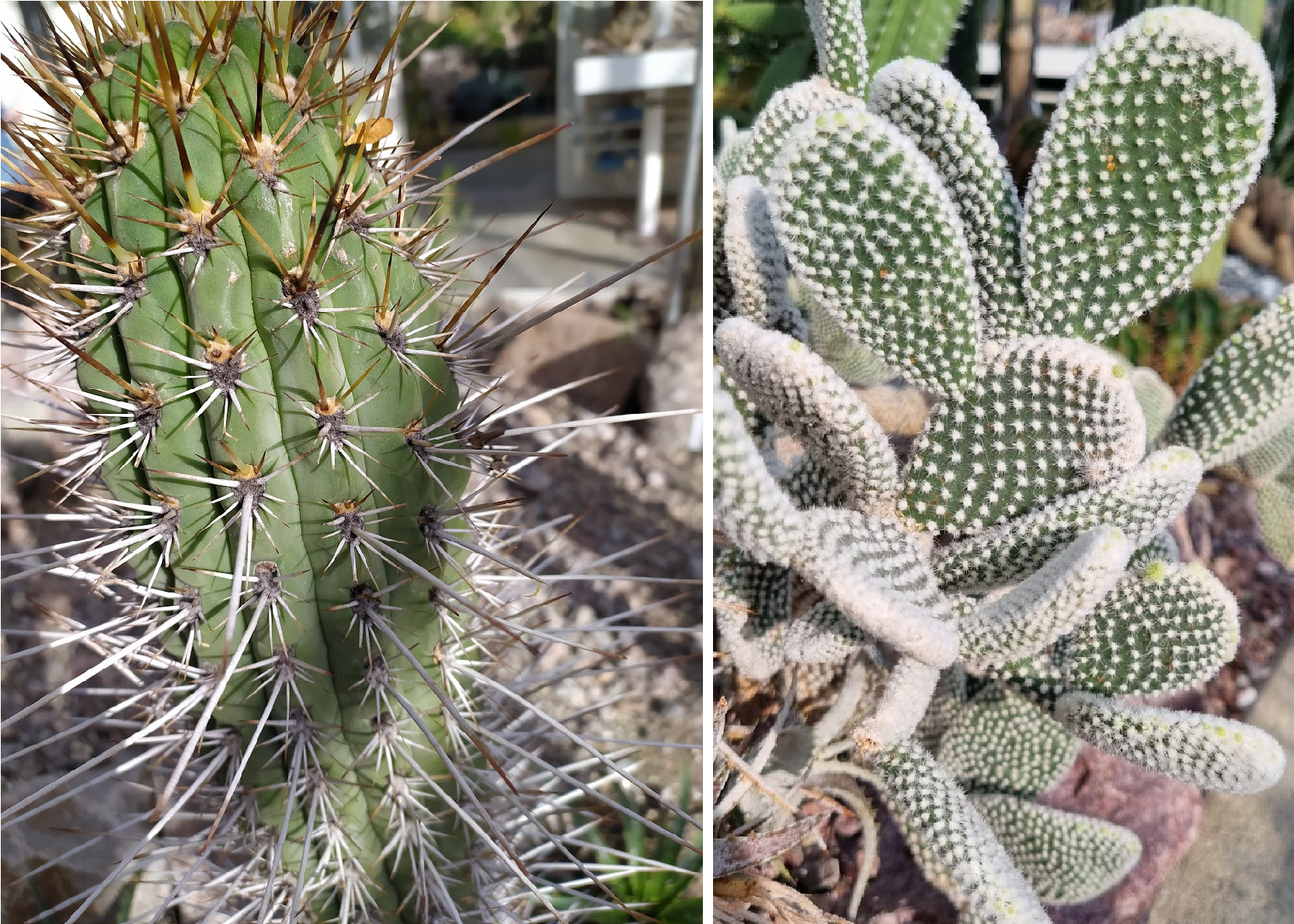
Spines on a Trichocereus (left) vs glochids on Opuntia (right). The flat shape of Opuntia segments might resemble leaves but those are also branches. They evolved to limit the sun exposure by limiting the projection surface.
An analogous solution are thorns. Those can be found on the succulents from the Euphorbiaea family. While they serve the same role as cactus’ spines, thorns grow directly on the branch. Interestingly, many species grow both thorns and leaves - something not commonly seen in the cacti family.
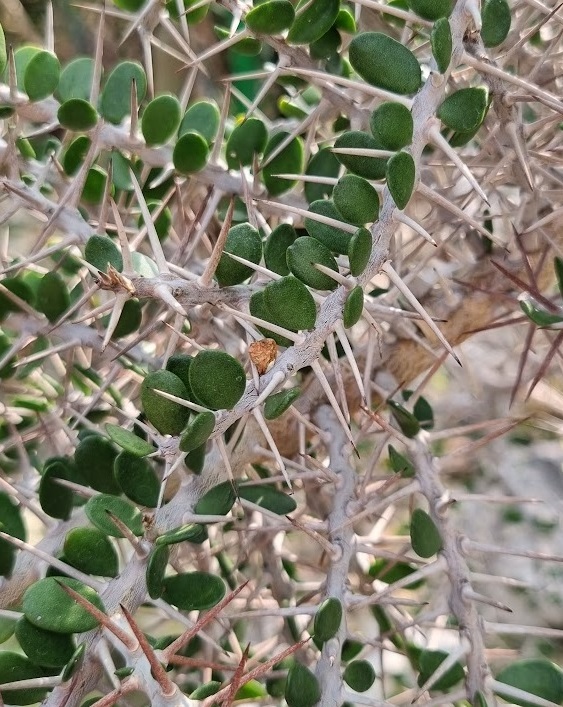
Thorns on the branches of a succulent from Didireaceae family
Apart from mechanical protection, some succulents employ poisonous chemicals to scare off the herbivores. Plants of the spurge family (Euphorbia) often contain so-called “wolf’s milk” - white sap released upon damage. Thanks to that only a handful of animals are able to threaten it.
The final strategy is to keep the edible, resource-rich parts of the tree out of the herbivores’ reach. Since some succulents grow over 10 meters high (example: baobab), most of the land dwellers cannot reach the leaves and fruit on the top.
Growth Patterns
Due to their extreme specialization, succulents come in a wide variety of forms and shapes. The biggest representatives easily dominate the landscape:
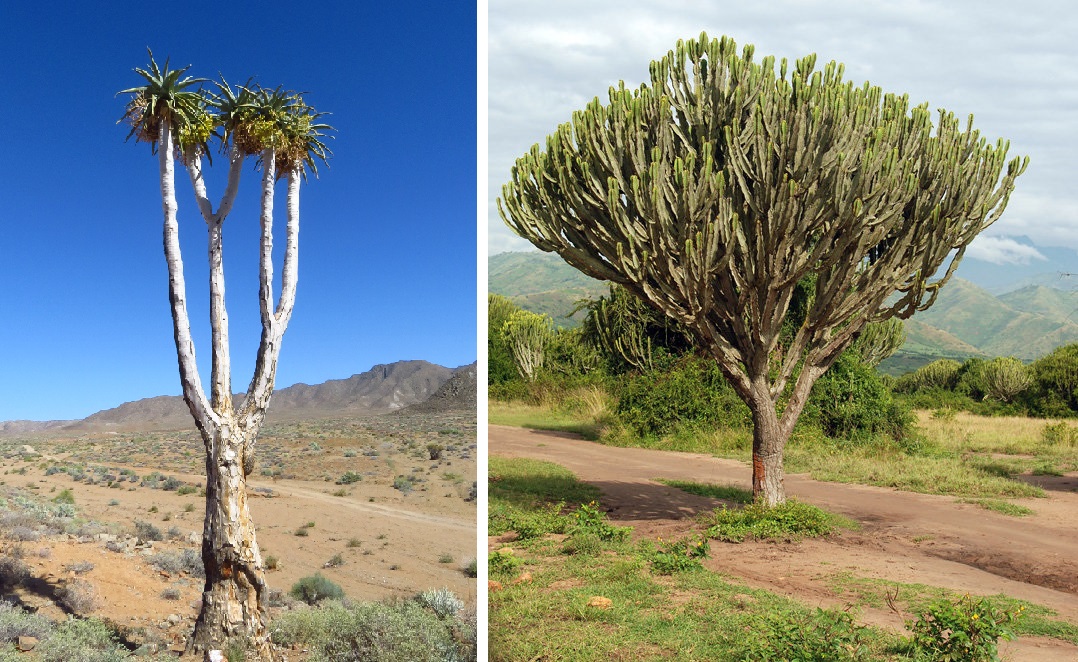
Two of my favourite curiosities. Aloe pillansii (left) shows that the aloes we know as pot plants is a wide and various family. Those can grow up to 15 meters high. On the right an east-african-native Euphorbia candelabrum with a self-explanatory name.
At the other end of the spectrum is Blossfeldia liliputana - a tiny succulent that grows to just 2 centimeters.
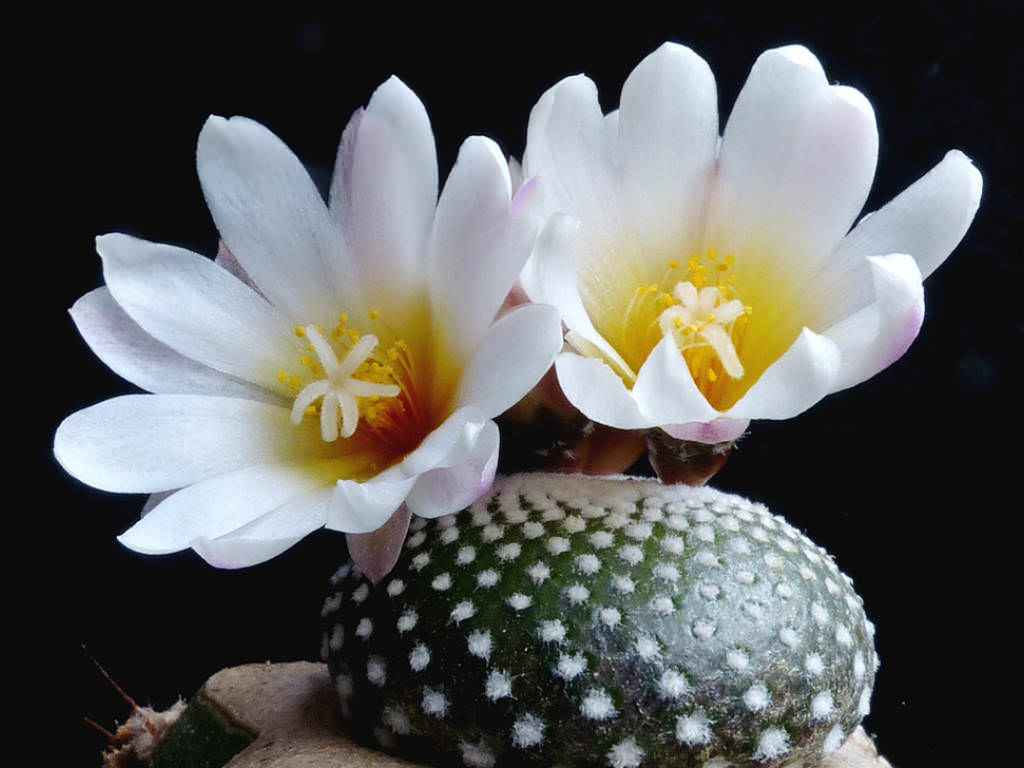
A close-up on B. liliputana.
In order to reproduce, succulents need to produce seeds. However, only newly-grown parts of the plant can to produce them, forcing the plant to grow each year.
Some succulents limit their seasonal growth to the bare minimum dictated by the scarcity of resources. They grow a couple of millimeters, releasing single leaves and flowers. The goal is to gather just enough resources to make the flower bloom and, later, develop the fruit.

A single flower with three leaves on a branch of a Euphorbia succulent
Succulents - especially cacti - are usually thought to be growing extremely slowly. There are however numerous exceptions to this rule. Agave americana’s flower spike is able to grow an astonishing 1cm per hour. A columnar cactus Cereus jamacaru grows segments measuring 40-60cm each growing season.
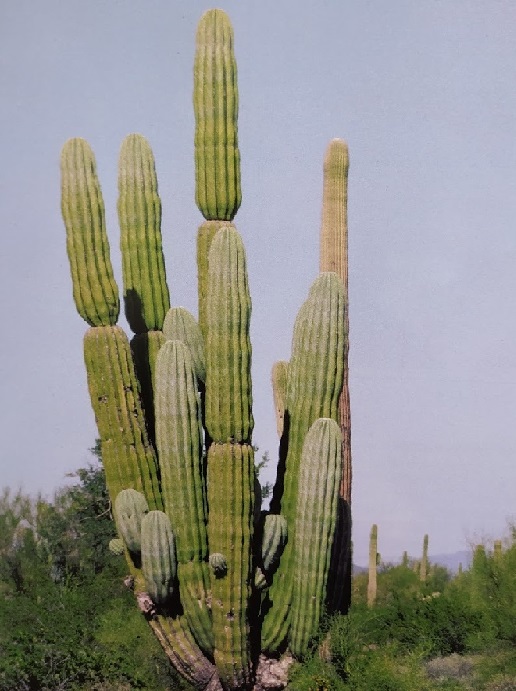
Each segment of the C.jamacaru cactus is grown during one season.
Interestingly, cacti and similar stem-photosynthesizing succulents contain no growth rings. After all, they do not grow bark and, as mentioned, their shape fluctuates. Therefore, dating a cactus is no easy task. Usually, they are dated by their size and constellation of the spines. (unless it’s a C.jamacaru. This one is trivial to date).
Another detail is the growth in diameter. Since cacti cover their surface with spines, they need to reform the pattern of the areoles to maintain the coverage. Here are several close-ups of the exact places where the diameter of the cactus increases.

Splitting of the spines. On the left, one row of areoles splits into two. On the right, the areoles diverge and a new row spawns.
Some succulents grow in a pattern that allows them to produce new tissue without changing their shape. The sketch below shows this phenomenon.
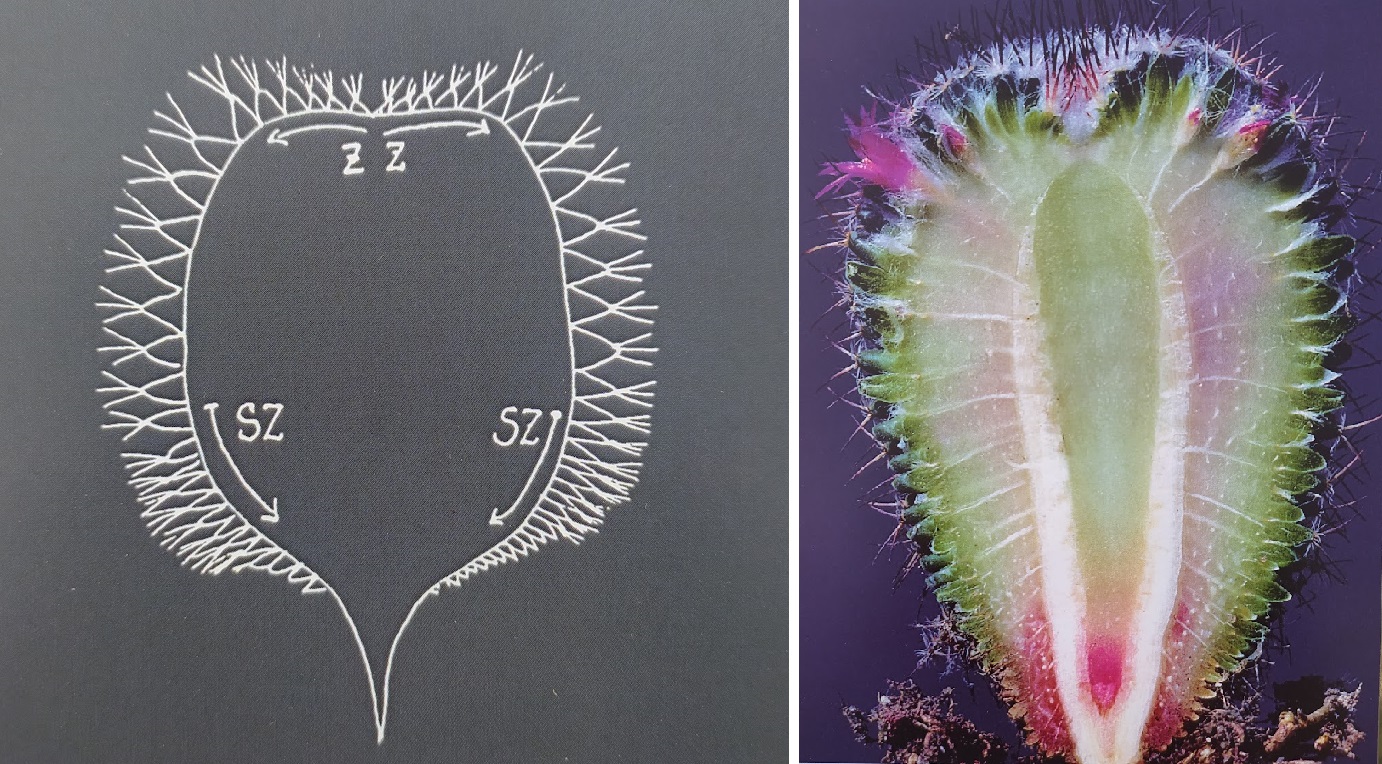
Model of self-contained growth (left). The plant grows on the top and “moves” towards the ground. While a bit far-fetched, to me it bears some resemblance to the Mandelbrot set. On the right, a cross-section of a plant “implementing” this growth pattern.
Random intricacies
To wrap up our virtual tour, three curiosities that did not fit in anywhere else.
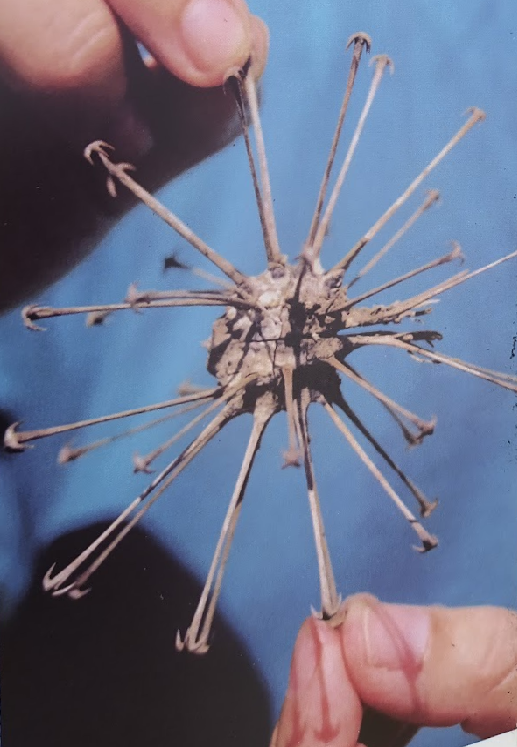
1. The Uncarina plant produces fascinating seeds. They are very lightweight and contain barbed spines used for attaching to animals. Thanks to the hooks, they are able to travel many miles, holding on to an unsuspecting animal.
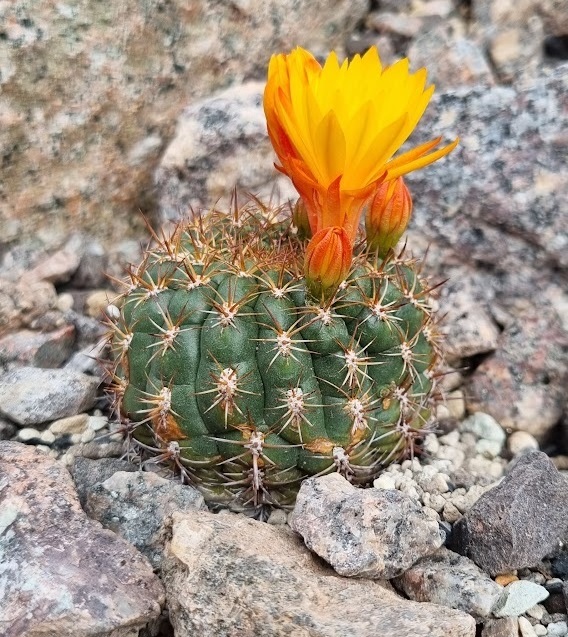
2. A lovely contrast between the coarse, spiny host and the delicate flower on top, growing from an areole.
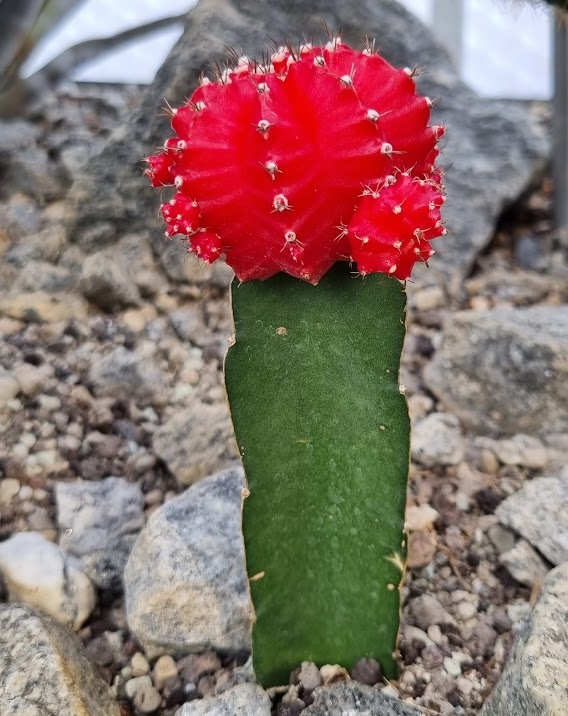
3. Gymnocalycium mihanovichii - called Erdbeercactus in german - a strawberry cactus. This species has been awarded the prestigious Cactus of the Year 2023 prize by the Cactus Societies in Germany, Austria and Switzerland. (In my book, the Cactus of the Year contest is a far more exciting competition than the Eurovision…)
Resources:
- Main resource: Sukkulenten-Sammlung Zürich
- Baobab die-off, National Geographic